Cosine rule can be used for any triangle (whether it is rightangled triangle or not) to relate all the side of the triangle to one angle Rule for finding sides a 2 = b 2 c 2 2bc * cos (A) b 2 = a 2 c 2 2ac * cos (B) c 2 = a 2 b 2 2ab * cos Rule for finding angles cos (A) = b 2 c 2 a 2 / 2bc Transcript Ex 21, 2 Find the principal value of cos1 (√3/2) Let y = cos1 √3/2 cos y = √3/2 cos y = cos 𝝅/𝟔 ∴ y = 𝝅/𝟔 Since Range of cos1 is 0, 𝜋 Hence, Principal Value is 𝝅/𝟔 (Since cos 𝜋/6 = √3/2) C Trig Functions of Any Angle The definitions based on an acute angle in a right triangle extend to trig functions of any angle r is always >0, so signs of functions in any quadrant pop right out from signs of x and y in that quadrant Do quadrant angles by reference to x y r, eg cos 0° = 1/1 = 1 and sin π = 0/−1 = 0

Inverse Cos Sqrt 3 2 Youtube
Inverse cos root 3 over 2
Inverse cos root 3 over 2-Inverse trigonometric functions are widely used in engineering, navigation, physics, and geometry The arccosine of x is defined as the inverse trigonometric function of cosine when 1≤x≤1 When cos y = x Then the arccosine of x is equal to the inverse cosine trigonometric function of x, which is equal to y arccos x = cos1 x = y4 Let P = a i j be a 3 × 3 matrix and let Q = b i j where b i j = 2 i j a i j for 1 ≤ i, j ≤ If the determinant of P is 2, then the determinant of the matrix Q is 5 If the sum of n terms of an AP is given by S n = n 2 n, then the common difference of the AP is 6



1
Evaluate coscos1 (√3/2) π/6 inverse trigonometric functions;(ii) cos −1 √3/2 Solution x = cos −1 √3/2 cos x = √3/2 cos x = cos π/6 x = π/6, where x ∊ 0, π (iii) cosec −1 (1) Solution x = cosec −1 (1) Range of cosec1 x is π/2, π/2, so the required angle lies in the above interval cosec x = cosec (π/2) x = π/2, where x ∊ π/2, π/2 (iv) sec −1 (√2)Q cos1 (√3/2) = answer choices π/3 2π/3 π/6 5π/6 s Question 4 SURVEY 60 seconds Q What range of angles can you get from inverse cosine?
Wnte the Value of the Expression Tan ( Sin − 1 X Cos − 1 X 2 ) , When X = √ 3 2 Department of PreUniversity Education, Karnataka PUC Karnataka Science Class 12 Textbook Solutions Important Solutions Inverse Trigonometric Functions (Simplification and Examples) video tutorial ;Let us recall that the principal value of a inverse trigonometric function at a point x is the value of the inverse function at the point x, which lies in the range of principal branch For instance, the principal value of cos−1 (√3/2) is π/6 Since π /6 ∈ 0, πClick here👆to get an answer to your question ️ Evaluate cos cos^1 (√(3)2) pi6 Join / Login > 12th > Maths > Inverse Trigonometric Functions > Inverse Trigonometric Functions > Evaluate cos cos
Principal Value of Inverse Trigonometric Functions When there are two values, one is positive and the other is negative such that they are numerically equal, then the principal value of the inverse trigonometric function is the positive one For instance, the principal value of cos − 1 (√3/2Inverse Cosine is one of the Trigonometric functions Each trigonometric function has an inverse function of it, whether it is sine, cosine, tangent, secant, cosecant and cotangent These functions are also widely used, apart from the trigonometric formulas, to solve many problems in Maths α = cos1 (Base/Hypotenuse) α = cos1 (√3 /2)Welcome to arcsin √(3)/2, our post aboutthe arcsine of √(3)/2 For the inverse trigonometric function of sine √(3)/2 we usually employ the abbreviation arcsin and write it as arcsin √(3)/2 or arcsin(√(3)/2) If you have been looking for what is arcsin √(3)/2, either in degrees or radians, or if you have been wondering about the inverse of sin √(3)/2, then you are right
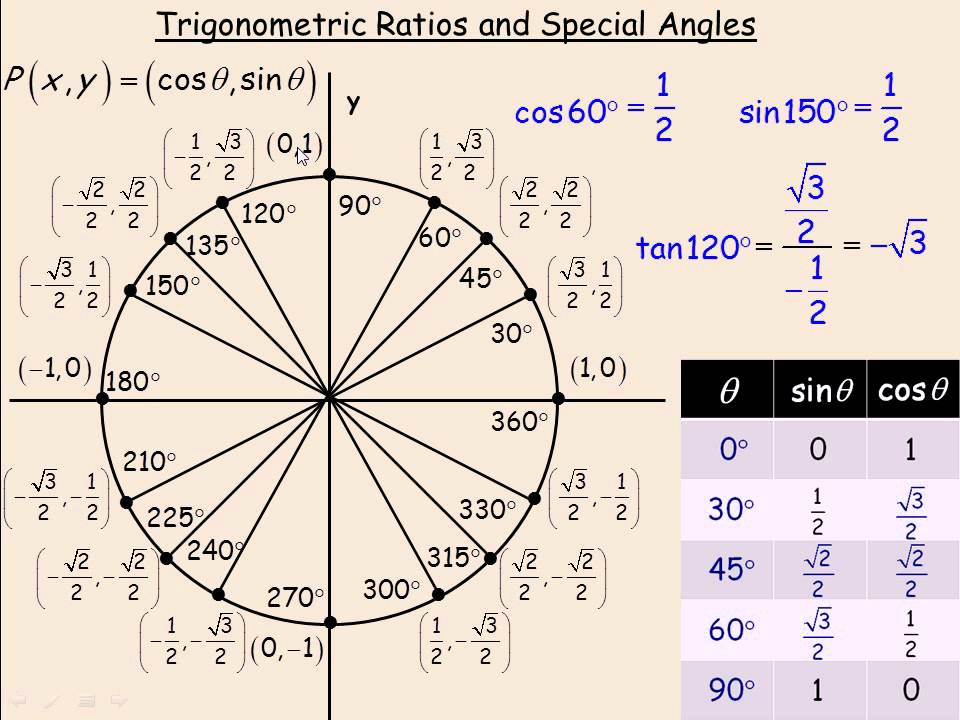



How Do You Evaluate Cos 1 1 2 Without A Calculator Socratic




Evaluate Tan 1 3 Sec 1 2
If you want to find the answer in a short way,you can use calculatorHere,COS beta =√3/2 Thetefore,Beta=cos^1(√3/2)=30° From this value, Cot Beta=cot30°=√3 Or, cosBeta =√3/2we know that, Sin^2 betacos^2 beta =1 Sin^2 beta=1(√3/2) Sin^2 beta =1/4 Sin beta = 1/2 Therefore, cot beta = (√3/2) ÷(1/2) Cot beta=√3Share It On Facebook Twitter Email 1 Answer 1 vote answered by Shyam01 (504k points) selected by Chandan01 Best answer = cos π = 1According to the definition of cosine, the equals the adjacent side divide by hypotenuse C o s () = a / c = 30 / 26 = 0866 So the inverse function is = a r c c o s ( 0866) = 30 d e g r e e o r r a d i a n However, An online arcsin calculator allows you to determine the arcsin (x) and display the results in radians, degrees, and




Ncert Exemplar Solutions For Class 12 Maths Chapter 2 Inverse Trigonometric Functions Access Free Pdf




Inverse Sin Negative Square Root 3 Over 2 Youtube
For such type of problems it is almost always useful to take the angle in the function as say x, ie, take 1/2 cos (inverse) (√5/3) = x That would mean cos (2x) = √5/3 Using cos (2x) = cos^2 (x) 1 cos^2 (x) 1 = √5/3 Solve for cos (x) and then you can get tan (x) which is needed ) 37K views Related AnswerInverse trigonometric ratios are the inverse of the trigonometric functions operating on the ratio of the sides of the triangle to find out the measure of the angles of the rightangled triangle The inverse of a function is denoted by the superscript "1" of the given trigonometric function For example, the inverse of the cosine function will be cos1Cos1 ((√3/2)) = (A) (π/2) (B) (π/3) (π/4) (D) (π/6) Check Answer and Solution for above question from Mathematics in Inverse Trigonometri




If Cos Theta Sqrt 3 2 And Theta Lies In Quadrant Iii Find The Values Of All The Youtube




Inverse Cos Sqrt 3 2 Youtube
Prove sin(inverse)(1/2) cos(inverse)(√3/2)= 2 /3 Maths Inverse Trigonometric FunctionsA) translate into English Remember, "inverse" isn't English sin (cos^–1 (t)) b) draw a triangle to find solution (s) to tan (cos^–1 (t)) c) if t = – (√3)/2, show your steps to find cot (cos^–1 (t))Use the indentity sin (A B) = sin (A)cos (B) cos (A)sin (B) to expand the given expression Use the above indentities to simplify each term in the above expression sin (arccos (1/2)) = √ (1 ( 1/2) 2) = √3/2 (we have used sin (arccos (x)) = √ (1 x 2 )) Substitute and calculate




Algebra 2 Help What Are The Sine Cosine And Tangent Of 5pi 3 R



What Will Be The Value Of Sin Inverse Root3 2 Quora
2π/3 cot¹ (1) 3π/4 cot¹ (√3) 5π/6 Upgrade to remove ads Only $299/monthDetermine angle type 240 is an obtuse angle since it is greater than 90° cos (4π/3) = 1/2 In Microsoft Excel or Google Sheets, you write this function as =COS (4PI ()/3) Important Angle Summary θ° θ radiansAbout Press Copyright Contact us Creators Advertise Developers Terms Privacy Policy & Safety How works Test new features Press Copyright Contact us Creators



Evaluate Cos Cos 1 3 2 P 6 Sarthaks Econnect Largest Online Education Community




Prove Cos 1 X Cos 1 X 2 Root 3 3x 2 2 Pi 3 Teachoo
Insure the inverse is a function Mark the axes that represent the angle measure 7 We use the names sin1, cos1, and tan1 or Arcsin, Arccos, and Arctan to represent the inverse of these functions on the limited domains you explored above The values in the limited domains of sine, cosine and tangent are called principal values (Similar to Let cos1 (√3/2) = y then, cos y = √3/2 Range of principal value for cos1 is 0, π and cos(π/6) = √3/2 Therefore, principal value of cos1 (√3/2) = π/6 Question 3 cosec1 (2) Solution Let cosec1 (2) = y then, cosec y = 2 Range of principal value for cosec1 is π/2, π/2 {0} and cosec(π/6) = 2_√3 2, 1, _1 2, √2 _ _ 2, √3 2, 1} 39 Make a conjecture about f(x) 40 Considering only positive values of x, provide an explanation of why your conjecture might be true 41 OPEN ENDED Write an equation giving the value of the Cosine function for an angle measure in its domain Then, write your equation in the form of an inverse




Sin 1 X Cos 1 X Pi 6 Brainly In



1
Click here👆to get an answer to your question ️ Write the value of tan^12sin(2cos^1 √(3)2)Ask Question Asked 7 years, 5 months ago Active 7 years, 5 months ago Viewed 44 times 1 For my math homework, I have to find an angle of rotation, θ, by cos θ = − 3 / 2 When I plug this into my calculator, I get 5 π /6, but the correct answer is 5 π /6 Evaluate cos cos1 (√3/2)π/6 0 votes 150k views asked in Class XII Maths by nikita74 (1,017 points) inverse trigonometric functions



If Y Cos 1 2x 3 1 X 2 13 Then Find Dy Dx Sarthaks Econnect Largest Online Education Community
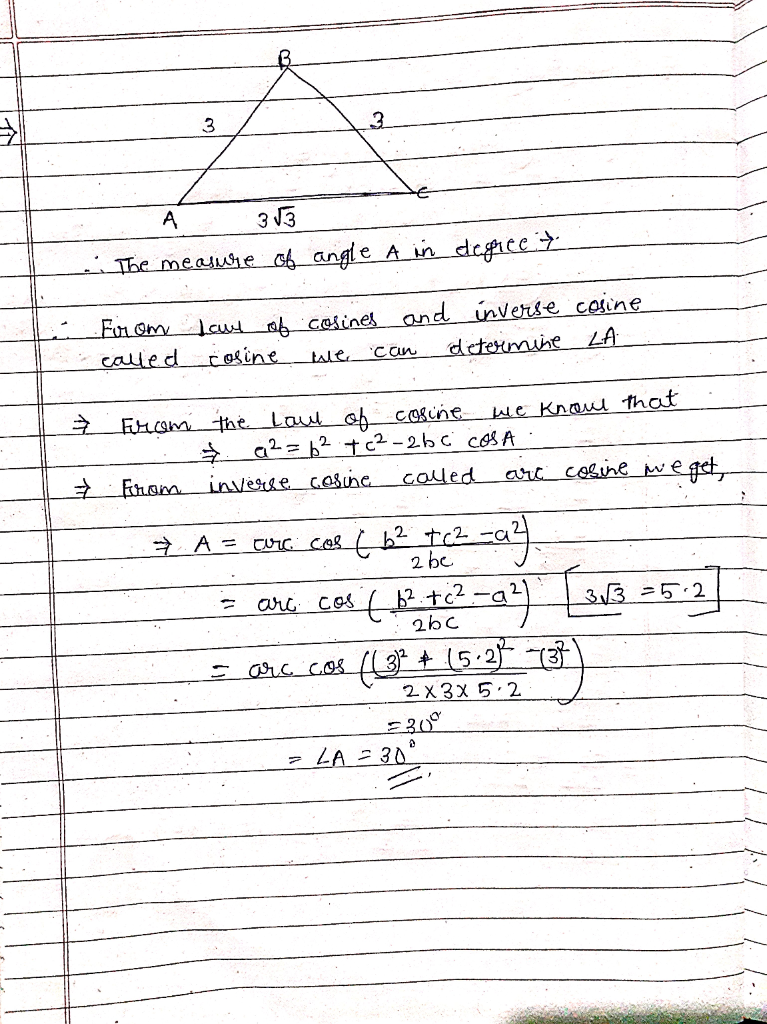



Please Explain In Details How The 3 The Square Chegg Com
Inverse cosine calculator cos1 150° 5π/6√ 3 /2 135° 3π/4√ 2 /2 1° 2π/31/2 90° π/2 0 60° π/3 1/2 45° π/4 √ 2 /2 30° π/6 √ 3 /2 0°What are the relations among all the trigonometrical ratios of (180° θ)?Tan 1 (√3) π/3 OTHER SETS BY THIS CREATOR Inverse Trig Graphs 6 terms chuc_an_tran Inverse Trigonometry Functions Domain and Range 12 terms chuc_an_tran




Example Find Solution Of Sin X Root 3 2 Class 11




Differentiate Tan 1 1 X 2 X With Respect To Cos 1 2x 1 X 2 When X 0
AB = cos inverse of √3/2 AB = π/6 ABAB = π/2 π/6 2A = 4π/6 ⇒A = π/3 ABAB = π/2 π/6 2B = π/3 ⇒B = π/6 there are 4 sets of answers New questions in Math X^2/(xsinx5cosx)^2 Hw&Questions Show answers Question 1 SURVEY 300 seconds Report an issue Q sin 1 (1/2) answer choices π/3Restrict Cosine Function • The restriction of a cosine function is similar to the restriction of a sine function • The intervals are 0, π because within this interval the graph passes the horizontal line test • Each range goes through once as x moves from 0 to π Inverse Cosine Function • Once we have the restricted function, we are able to proceed with defining the inverse cosine




What Is The Inverse Tangent Of Root 3 Over 3




Ex 2 1 5 Find Principal Value Of Cos 1 1 2 Inverse
Cot Inverse Calculator Are you looking for a smart tool that calculates the cotangent inverse of a real number or fraction within no time?Then, you have arrived the correct place and our calculator is the best tool that you are looking for The main aim of our Cot Inverse Calculator is to calculate the cotangent inverse of numbers simply and quicklyCos (2π/3) = 1/23) √3/2 4) 1/√2 Answer (2) 1/2 Solution Given, 4 sin1 (x) cos1 (x) = π 3 sin1 (x) sin1 (x) cos1 (x) = π 3 sin1 (x) (π/2) = π 3 sin1 (x) = π – (π/2) 3




What Is The Principal Value Of Sin 1 Sqrt 3 2




Sin 1 2xsqrt 1 X 2 2sin 1 X Is True If X In 0 1
Obj To learn about the inverse sine, inverse cosine, and Evaluate inverse tangent functions 1 sin1( ) 2 sin1( ) 3 sin1( ) 1 2 √3 2 √2 2 1 4 cos1( ) 5 cos1( 1 ) 6 cos1( ) 1 27 tan1 ( 0 ) 8 tan1 ( 1 ) 9 tan1 ( √ 3 )Inverse cosine calculator Example of Few questions where you can use this formula Find the value of cos−10 c o s − 1 0 in radian Find the value of cos−11 c o s − 1 1 in radian Find the value of cos−125 c o s − 1 25 in ° link to this page by copying the following textSine, inverse cosine, and inverse tangent 1 Inverse sine function The inverse sine function is written as y = sin−1(x) or y = arcsinx (Not to be confused with y = 1/sinx) The domain of arcsinx is the interval −1,1 and its range is −π 2, π 2 For any number x between −1 and 1, arcsinx is the angle between − π 2 and 2 whose



Prove The Following Cos Sin 1 3 5 Cot 1 3 2 6 5 13 Sarthaks Econnect Largest Online Education Community




Example 1 Evaluate Inverse Trigonometric Functions Evaluate The Expression In Both Radians And Degrees A Cos 1 3 2 Solution A When 0 8 P Or 0 180 Ppt Download
We can see from the diagram that cos u = √ 3 2, but cos u = x, so we can say x = √ 3 2 You want to get one inverse function by itself on one side, so let's choose arcsin x (We could have started by isolating arccos x on the left side)Thelength of rectangle Then sem twice to theIts breadth andperimeter is 52cm FindLength and breadth answeredby rubby(5kpoints) selectedby Vikash Kumar Best answer The principal value of cos1(√3/2) is 5π/6 Please log inor registerto add a comment 1vote answeredby Nandy(50points) X=coc^1(√3/2)=πcos^1(√3/2) =ππ/6=5π/6
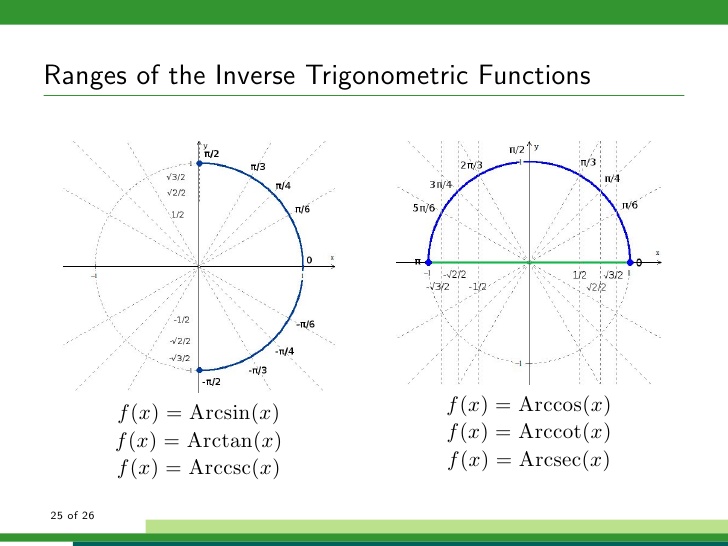



Find The Value Of Socratic
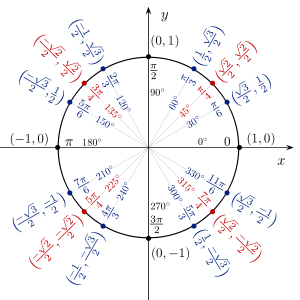



How Do You Evaluate Cos 1 Sqrt3 2 Socratic
Find the simplified form of cos1 3/5 cos x 4/5 sin x, x ∈ 3π/4,π/4 0 votes 72k views asked in Class XII Maths by nikita74 (1,017 points) Find the simplified form of cos 1 3/5 cos x 4/5 sin x, x ∈ 3π/4,π/4 inverse trigonometric functionsFinding the correct angle from inverse cosine? cos{picos1 (3/2)pi/4} cos{pipi/6pi/4} cos{7pi/12}1 ;




Cos Cos 1 Root3 2 Pi 4 Maths Inverse Trigonometric Functions Meritnation Com




Provethat Cos Sin 1 3 5 Cot 1 3 2 6 5 Root 13 Brainly In
Sine calculator online sin(x) calculator This website uses cookies to improve your experience, analyze traffic and display adsOnce again, this may involve the use of the "2nd" key to obtain cos−1 cos−1 (0343) = 1269 ≈ 1221 5/7 57 Inverse Trigonometric Functions PRACTICE TEST Question 9 Grade 10 / 10 Find the exact value of the inverse sine, cosine, and tangent of − −1 sin (– √ – √3 3 = ) 2 , if possible 2 – − π (33%) 3 −1 cos (– 5 π √ – 3 = ) 2 (33%) 6 −1 tan (– √ – 3 = ) 2 The exact valueIn trigonometrical ratios of angles (180° θ) we will find the relation between all six trigonometrical ratios We know that, sin (90° θ) = cos θ cos (90° θ) = sin θ tan (90° θ) =




Misc 12 Chapter 2 Inverse Trigonometry Prove 9pi 8 9 4




The Value Of Cos 1sqrt 2 3 Cos 1 Sqrt6 1 2sqrt3 Is Equa




Cos Cos 1 Sqrt 3 2 Pi 6 Youtube




Example 3 Show I Sin 1 2x Root 1 X2 2 Sin 1 X Examples
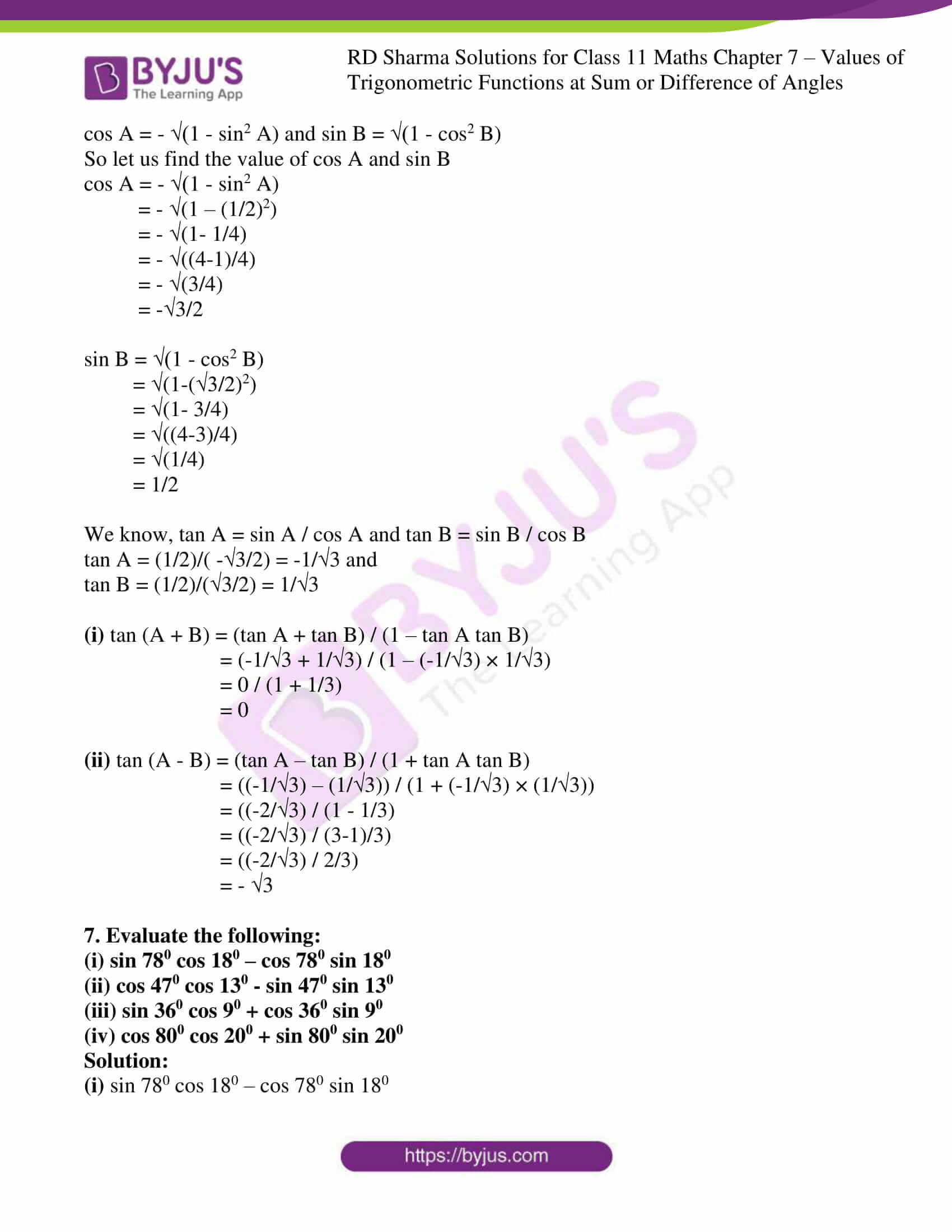



Rd Sharma Solutions For Class 11 Chapter 7 Values Of Trigonometric Functions At Sum Or Difference Of Angles Download Free Pdf




Prove That Cos 1 X 2 Sin 1 Sqrt 1 X 2 2 Cos 1 Sqrt 1 X 2 Youtube




2 Root 3 Frac 2 Sqrt 3
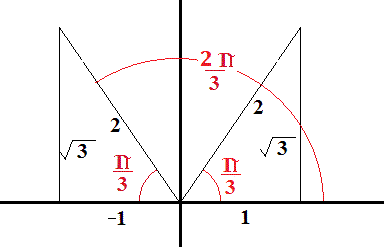



What Is The Sin 1 Sqrt 3 2 Socratic
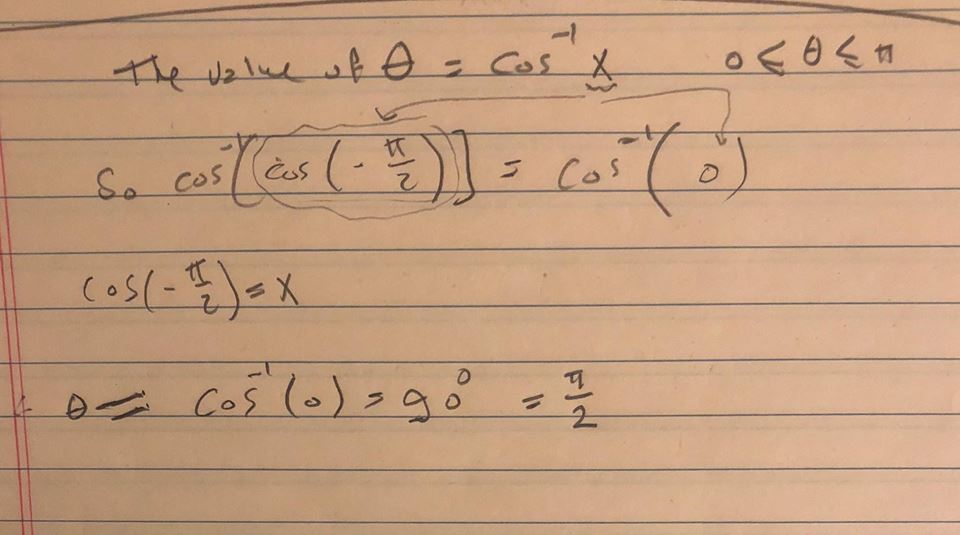



How Do You Evaluate Cos 1 Cos Pi 2 Socratic



Prove That Sin 1 Cot Sin 1 2 3 4 Cos 1 12 4 Sec 1 2 0 Sarthaks Econnect Largest Online Education Community



Q Tbn And9gcswsf Ecpsduz38bfjvi Leyscrwp8sy42we07iguooyebhgdbn Usqp Cau



Find The Value Of Sin 2tan 1 2 3 Cos Tan 1 3 Sarthaks Econnect Largest Online Education Community




If Sin Theta 1 2 And Cos Theta Root 3 2 Then Find The Value Of Tan Theta Tan Theta 1 Minus Tan Brainly In




If Sin Theta Sqrt 3 2 Then Cosec Theta Cot Theta Youtube



3
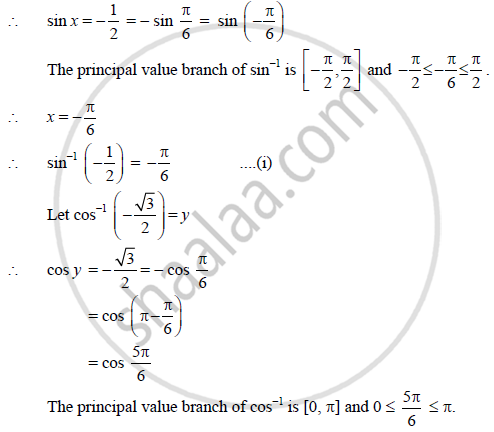



Prove That Sin 1 1 2 Cos 1 Sqrt3 2 Cos 1 1 2 Mathematics And Statistics Shaalaa Com




Sin 1 Circ Is Irrational But How Do I Prove It In A Slick Way And Tan 1 Circ Is Mathematics Stack Exchange



Prove That Tan 1 1 X2 1 X2 1 X2 1 X2 P 4 1 2 Cos 1x2 Studyrankersonline



What Is The Principle Value Of Sin 1 3 1 2 2 Quora



Evaluate I Sin 1 2 Cos 1 4 5 Ii Sin 2 Tan 1 2 3 Cos Tan 1 3 Sarthaks Econnect Largest Online Education Community




Evaluvate Cos Cos Inverse Square Root 3 2 Pi 6 Maths Inverse Trigonometric Functions Meritnation Com



Show That 2 Tan 1 3 P 2 Tan 1 4 3 Studyrankersonline



What Is The Principal Value Of Cos 1 Cos 2p 3 Sin 1 Sin 2p 3 Sarthaks Econnect Largest Online Education Community




Rd Sharma Solutions For Class 12 Maths Chapter 4 Inverse Trigonometric Functions Avail Free Pdf




Tan 1 1 Sqrt 3 Tanx 2 1 2cos 1 1 2cosx 2 Cosx Youtube




The Value Of The Expression Sin 1 Sin 22pi 7 Cos 1 Cos




Example 2 Find Principal Value Of Cot 1 1 Root 3 Examples




Ex 2 1 2 Find Principal Value Of Cos 1 Root 3 2 Class 12



Www Topperlearning Com Answer Sin 2 Cos Inverse 3 5 4rpsj0ll




Prove That Root 3 1 3 Cot 30 Degree Tan Cube 60 Degree 2 Sin 60 Degree Brainly In




Find The Principal Value Of I Sin 1 Sqrt 3 2 Ii Sin 1 1 2 Iii Cos 1 1 2 Iv Youtube
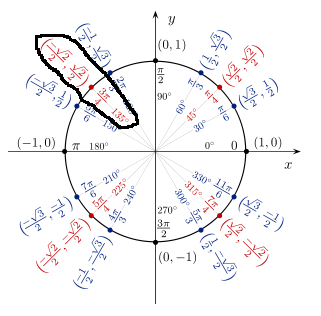



How Do You Find The Exact Value Of Arccos 1 Sqrt 2 Socratic




I N V E R S E S I N S Q R T 3 2 Zonealarm Results




Trigonometric Functions Justin Skycak




Find The Value Of Sin 1 Cos Sin 1 Sqrt 3 2



Write The Value Of Tan 1 2sin 2cos 1 3 2 Sarthaks Econnect Largest Online Education Community



1




Ex 2 1 14 Find Value Of Tan 1 Root 3 Sec 1 2 Ex 2 1




The Value Of Cos Cos 1 3 2 P 6 Is Brainly In




Ex 2 2 21 Find Tan 1 Root 3 Cot 1 Root 3 Chapter 2 Teachoo



How To Find The Value Of Tan 1 2 Cos 1 5 3 Quora



Find The Value Of Tan 1 1 3 Cot 1 1 3 Tan 1 Sin P 2 Studyrankersonline



Evaluate Cos Cos 1 3 2 P 6 Studyrankersonline



Evaluate Sin 2 Cos 1 3 5 Sarthaks Econnect Largest Online Education Community




Inverse Trigonometric Functions




The Value Of Sin 1 3 2 Cos 1 Cos 7pi 6 Is A 5pi



If Y X Cos 1 X 1 X 2 Log 1 X 2 Then Prove That Dy Dx Cos 1 X 1 X 2 3 2 Sarthaks Econnect Largest Online Education Community




Prove Cos 1 X Cos 1 X 2 Root 3 3x 2 2 Pi 3 Teachoo




The Value Of Sin 1 3 2 Cos 1 Cos 7pi 6 Is A 5pi




Exact Vluea Of Sin Sin 1 3 5 Cos 1 4 5 Inverse Trigonometric Ratio Negative Value Youtube




Ex 2 1 4 Find Principal Value Of Tan 1 Root 3 Cbse



Using Principal Values Write The Value Of 2 Cos 1 1 2 3 Sin 1 1 2 Sarthaks Econnect Largest Online Education Community




Cos 1 Sqrt 3 2 Find The Exact Value Of Each Expression Youtube




Ex 2 2 18 Tan Sin 1 3 5 Cot 1 3 2 Class 12 Ncert



Find The Values Of Tan 1 1 Cos 1 1 2 Sin 1 1 2 Sarthaks Econnect Largest Online Education Community



The Value Of Tan1 2 Cos 1 5 3 Is Sarthaks Econnect Largest Online Education Community




The Value Of Cos 1 2 3 Cos 1 6 1 2 3 Is Equal To




Sin 1 How To Derive Sin 1 Degrees Value
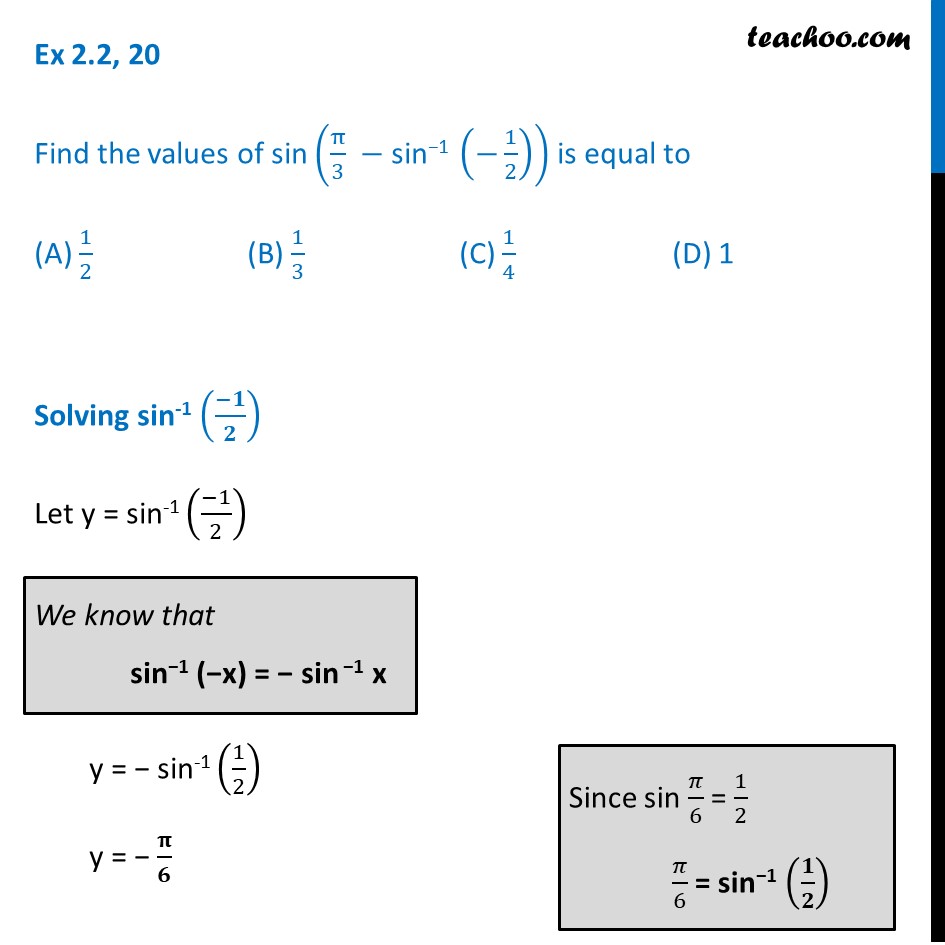



Ex 2 2 Find Sin Pi 3 Sin 1 1 2 Class 12 Ncert




Cos Cos 1 3 2 Pi 4 Maths Inverse Trigonometric Functions Meritnation Com




Sin Is Equals To Root 3 By 2 And Cos B Is Equals To Root 3 By 2 Then What Is The Value Of A B Brainly In
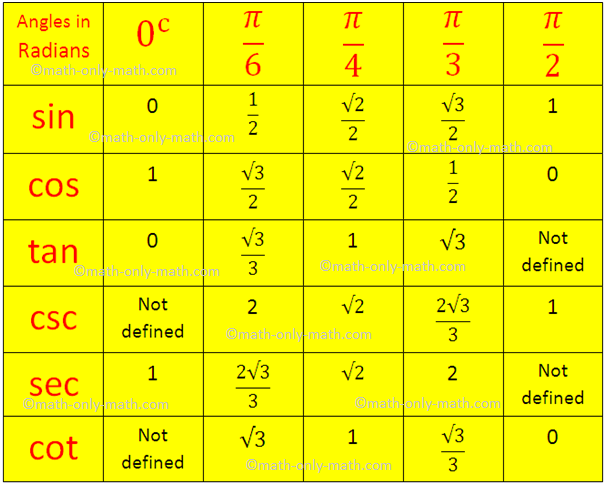



Trigonometrical Ratios Table Trigonometric Standard Angles Standard




Ex 2 2 21 Find Tan 1 Root 3 Cot 1 Root 3 Chapter 2 Teachoo




Example Find Solution Of Sin X Root 3 2 Class 11
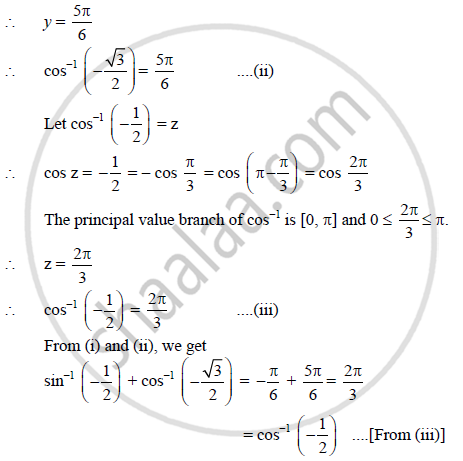



Prove That Sin 1 1 2 Cos 1 Sqrt3 2 Cos 1 1 2 Mathematics And Statistics Shaalaa Com




Ex 2 2 18 Tan Sin 1 3 5 Cot 1 3 2 Class 12 Ncert



What Is The Principal Value Of Cos 1 3 2 Sarthaks Econnect Largest Online Education Community




Sin 2tan Inverse 2 3 Cos Tan Inverse Root 3 Brainly In




Tan 1 2 Cos 1 5 3 Brainly In
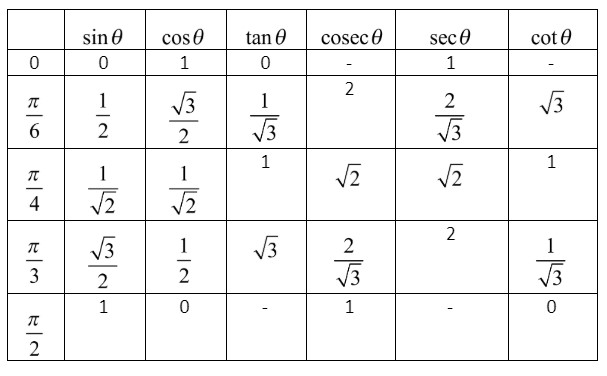



Find The Principal Value Of Sin 1left Dfracsqrt32 Class 12 Maths Cbse




The Value Of Sin 1 2cot 1 3 4 Cos 1 2cot 1 3 4 Is




Find The Value Of Sin 1 Cos Sin 1 Sqrt 3 2




What Is The Value Of Tan 1 2 Cos Inverse 5 3 Quora




Find The Principal Value Of Tan 1 3 Sec 1 2



Show That Tan 1 2 Sin 1 3 4 4 7 3 Sarthaks Econnect Largest Online Education Community




The Value Of Sin 1 2cot 1 3 4 Cos 1 2cot 1 3 4 Is




Prove That I Cos Pi 3 X 1 2 Cos X Sqrt 3 Sin X Ii Sin Youtube




Misc 9 Prove Tan 1 Root X 1 2 Cos 1 1 X 1 X



0 件のコメント:
コメントを投稿